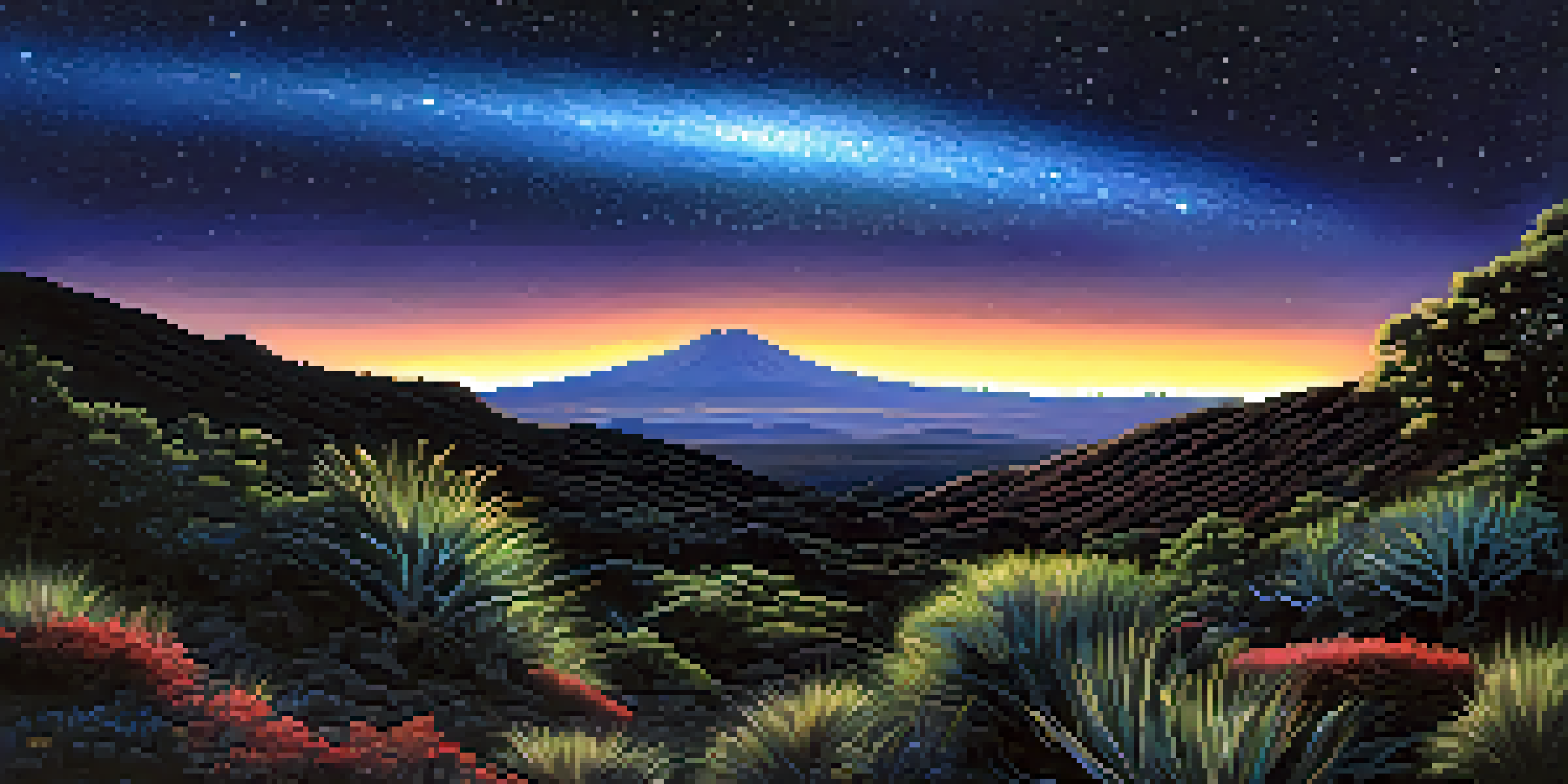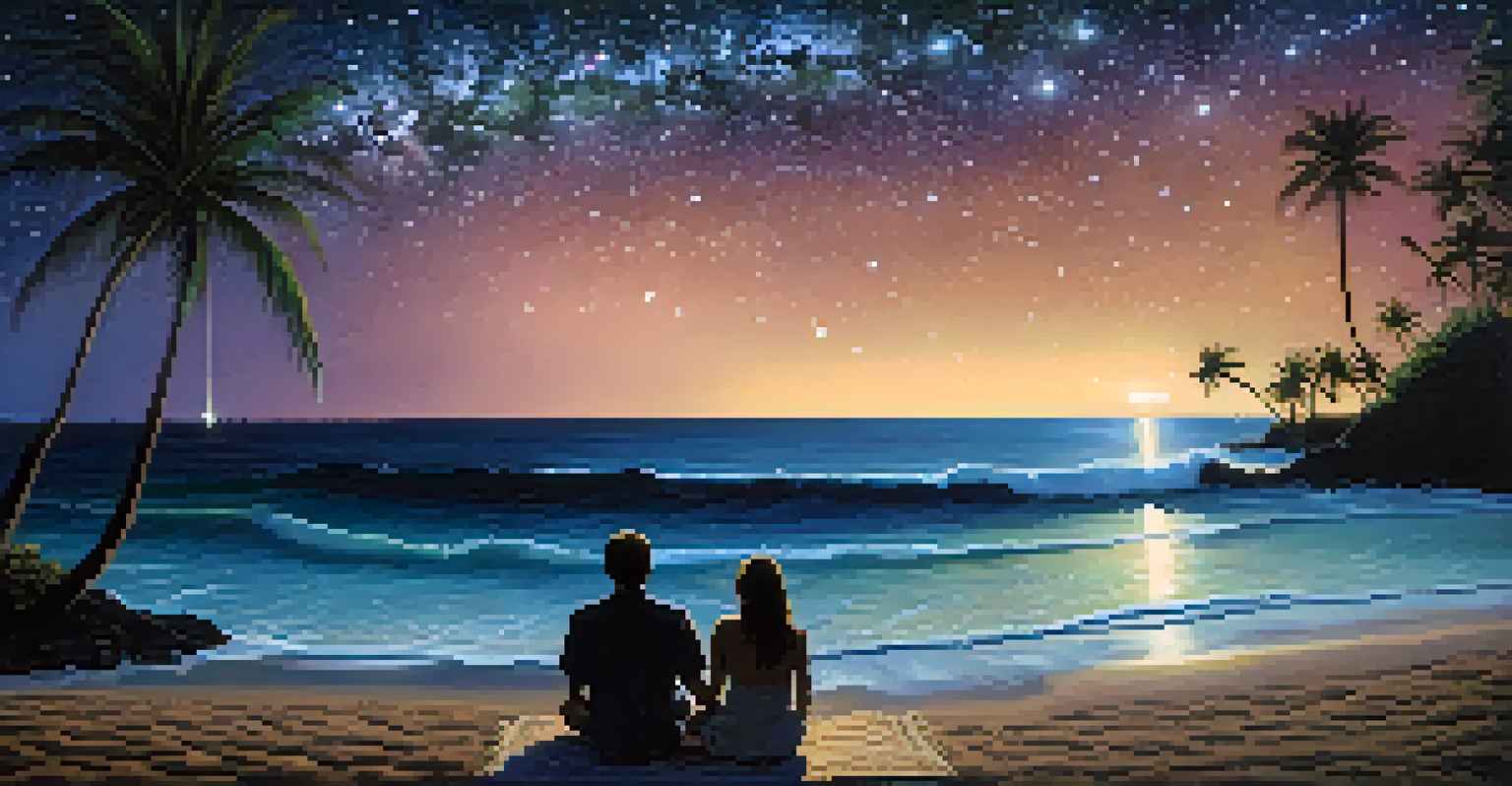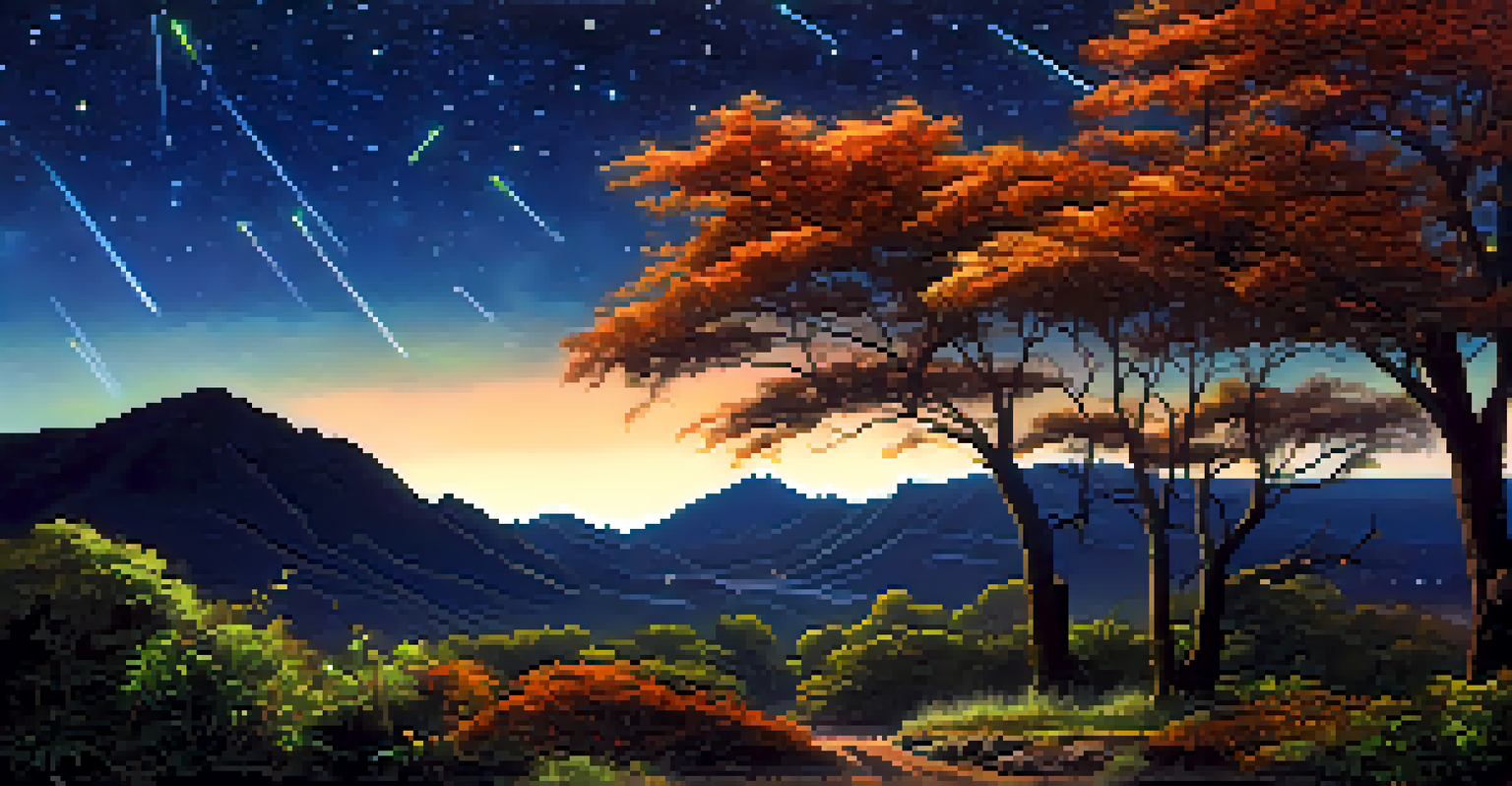The Best Time of Year for Stargazing in Hawaii: A Seasonal Guide

Why Hawaii is a Stargazer's Paradise
Hawaii is renowned for its breathtaking skies, making it a stargazer's haven. With minimal light pollution and a unique geographical position, the islands offer some of the clearest views of celestial wonders. Whether you're an amateur or a seasoned astronomer, the stars here seem to shine brighter and more vividly than elsewhere.
The stars are the streetlights of eternity.
The islands are home to Mauna Kea, one of the world's premier astronomical observation sites, where observatories dot the summit. This high elevation provides an unobstructed view of the cosmos, meaning you can delight in everything from constellations to distant galaxies. Plus, the warm, dry climate ensures many clear nights throughout the year.
In addition to the stunning views, the cultural significance of the stars in Hawaiian tradition adds a unique touch to your stargazing experience. The ancient Polynesians navigated the vast Pacific using the stars, and today, their stories and constellations continue to enrich the nighttime sky.
Winter: The Peak Season for Stargazing
Winter, particularly from December to February, is often considered the best season for stargazing in Hawaii. During these months, the skies are typically clearer, and the air is cooler, which enhances visibility. Stargazers can expect to see a plethora of celestial events, including meteor showers and planetary alignments.

In December, the Geminid meteor shower lights up the sky, offering one of the best views of shooting stars. If you're lucky, you might catch glimpses of the planets as they take center stage in the night sky. The combination of winter's crisp air and minimal humidity creates perfect conditions for an unforgettable stargazing experience.
Hawaii: Ideal for Stargazing
Hawaii's minimal light pollution and high elevations, particularly at Mauna Kea, make it a prime destination for observing celestial wonders.
Many local tours also operate during winter, guiding visitors to the best viewpoints and providing telescopes for a closer look at the stars. This is a fantastic way to learn about the constellations and get expert insights into what you're seeing overhead.
Spring: A Transition Period for Stargazing
As spring rolls in from March to May, the stargazing experience in Hawaii starts to shift. While the nights remain clear, the temperatures begin to rise, which can sometimes cause atmospheric disturbances. However, this season is still rich with celestial events worth watching.
We are all made of stardust. We are the cosmos made conscious and life is the means by which the universe understands itself.
Spring is known for the Lyrid meteor shower in April, which offers a chance to see shooting stars against the backdrop of a warming sky. Additionally, this season often features the return of planets like Venus and Jupiter, shining brightly and providing excellent targets for budding astronomers.
Spring also often sees fewer tourists, making it a peaceful time to explore the night sky. With less crowded viewing spots, you can truly soak in the experience and appreciate the beauty of the stars above.
Summer: Stargazing Under Warm Skies
Summer, from June to August, brings longer nights and warmer weather, creating a different stargazing atmosphere. While the skies can be cloudier due to the increase in humidity, many evenings still offer breathtaking views of the stars. The warm air can also create more atmospheric turbulence, which may affect visibility slightly.
One of the highlights of summer is the annual Perseid meteor shower in August. This event is famous for its bright shooting stars, which can be seen streaking across the night sky. The combination of warm nights and stunning meteor displays makes summer a unique time for stargazing.
Best Seasons for Stargazing
Winter offers the clearest skies and exciting meteor showers, while fall provides cooler temperatures and less crowded viewing spots.
Additionally, many local events and festivals celebrate the summer skies, with community gatherings that often include stargazing sessions. This is a wonderful opportunity to meet fellow stargazers and share your passion for the cosmos.
Fall: A Hidden Gem for Stargazers
Fall, spanning September to November, is often an underappreciated time for stargazing in Hawaii. As the humidity decreases and temperatures cool, the clarity of the night sky improves. This season is perfect for those looking to escape the summer crowds and still enjoy stunning celestial views.
The Orionid meteor shower in October is a must-see event, known for its fast-moving and bright meteors. Observing these shooting stars while enjoying the cooler evening air can be a magical experience. You might also spot constellations like Orion and Taurus rising in the sky, providing excellent opportunities for observation.
Moreover, fall is a great time for astrophotography enthusiasts. The combination of clearer skies and crisp air makes for stunning photographs of the Milky Way, capturing the beauty of the universe in its full glory.
Best Locations for Stargazing in Hawaii
Choosing the right location can significantly enhance your stargazing experience in Hawaii. Some of the best spots include Mauna Kea and Haleakalā, both of which offer high elevations and clear horizons. These locations are often less affected by light pollution, providing breathtaking views of the night sky.
Other great spots include the beaches of Big Island, where you can lay back on the sand and watch the stars while listening to the gentle waves. Areas like Polihale State Park on Kauai also provide stunning views and a tranquil atmosphere, making them perfect for a peaceful night under the stars.
Top Stargazing Locations
Locations like Mauna Kea and Haleakalā provide breathtaking views, and local tours enhance the stargazing experience with expert guidance.
Finally, consider joining a local stargazing tour or event. Many of these offer telescopes, expert guidance, and a chance to learn about the stars and constellations that fill Hawaii's skies.
Tips for an Unforgettable Stargazing Experience
To make the most of your stargazing adventure in Hawaii, consider a few handy tips. First, try to arrive at your chosen location before sunset to acclimate your eyes to the dark. This will help you see the stars more clearly as they begin to emerge. Bringing a blanket or reclining chair can also enhance your comfort while you gaze up at the cosmos.
It's also wise to check the weather forecast ahead of time. Clear skies are essential for a successful stargazing experience, and many websites and apps provide up-to-date information on cloud cover and visibility. If conditions aren't favorable, don't hesitate to adjust your plans and seek out a different location.

Lastly, bring along some snacks and a thermos of your favorite hot beverage. Stargazing is not just about the stars; it's about enjoying the experience with loved ones. Sharing stories and marveling at the universe together can create unforgettable memories under the Hawaiian night sky.